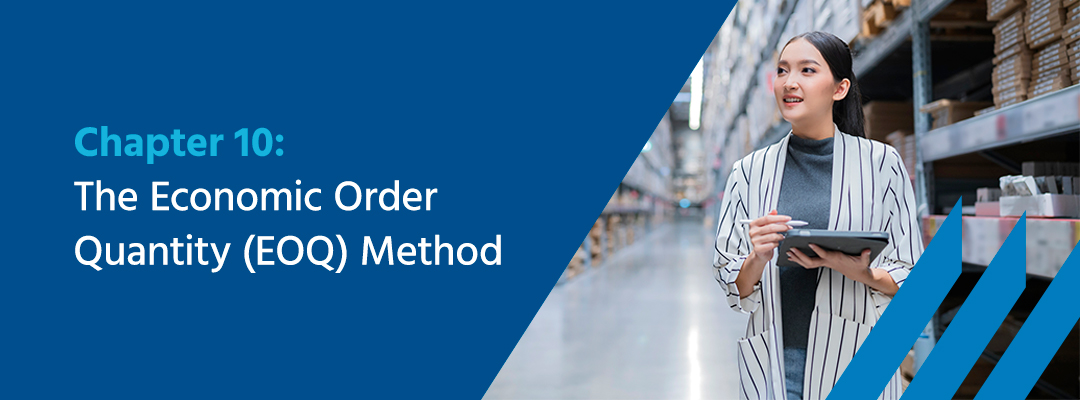Chapter 10: The Economic Order Quantity (EOQ) Method
Table of Contents
-
Inventory Management Techniques in Operations Management
- Chapter 2: Relationship Management
- Chapter 3: Contingency Planning
- Chapter 4: Regular Auditing
- Chapter 5: Prioritizing With ABC Inventory Analysis
- Chapter 6: Accurate Forecasting
- Chapter 7: Average Cost Inventory Accounting
- Chapter 8: The Just-in-Time (JIT) Method
- Chapter 9: Backordering
- Chapter 10: The Economic Order Quantity (EOQ) Method
- Chapter 11: The Fast, Slow and Non-Moving (FSN) Method

When determining a reordering schedule, you can often save warehousing space by reordering more often in smaller quantities. However, reordering more often leads to higher logistics costs while saving on storage costs. Increasing storage costs will likewise lower logistics costs.
The economic order quantity (EOQ) formula helps you balance these two costs to find the most cost-effective way to reorder stock. It also accounts for the quantities needed to maintain adequate stock levels to help your business take advantage of the most sales opportunities.
What Is the EOQ Model?
Economic order quantity is the optimal amount of inventory to have on hand at any given time. It’s distinct from the reorder point formula, which determines when to reorder. The EOQ formula determines how much stock you should keep on hand to run your business most efficiently with better inventory ordering methods.
The EOQ helps you determine the optimal quantities to reorder to help you reduce shipping and warehousing costs while minimizing stockouts and overstocks. It’s an especially helpful tool for third-party logistics (3PL) providers that manage logistics, warehousing and shipping for their clients. Using the EOQ formula, you can quickly determine the reordering schedule and quantities that will save your business the most money.
How Economic Order Quantity Is Calculated: The EOQ Formula
To calculate your EOQ, you’ll first need to know three variables:
- Holding costs: This is how much it costs to store and manage inventory in your warehouse. Calculate holding costs using this formula: (Storage costs + employee wages + opportunity costs + depreciation costs) / total value of your annual inventory = inventory holding cost
- Annual demand: This is how much product you expect to sell in a year.
- Order costs: This is the fixed setup cost associated with placing an order with a supplier, shipping and handling fees and anything other than the inventory itself that your supplier invoices you for.
To calculate your EOQ, take the square root of 2 multiplied by your order costs multiplied by your annual demand, divided by your holding costs.
Finale Inventory Tracks Your Demand and Landed Costs
Finale Inventory’s robust analytics reporting suite offers detailed insights into your inventory catalog. You can track your landed costs and cost of goods sold (COGS) by individual product and analyze your sales velocity and sales history to predict your annual demand.
Once you’ve calculated your EOQ, you can execute your orders using our purchasing and replenishment module and use your ideal reordering quantities to inform your dynamic reorder point forecasting. To see for yourself how Finale Inventory can help you optimize your replenishment cycle, try the software free for 14 days.




